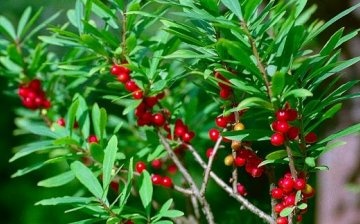Common wolfberry
Many of us have seen common wolfberry at least once in our lives. This is a low shrub that has a height of 50 cm to a meter, and under favorable conditions grows up to 2.5 meters in height. The bark of the branches and trunk is gray-brown. Even before the leaves appear on the bush, reddish or pink flowers4 and with a strong rather pleasant smell begin to bloom on it. This plant blooms from February to March.
Common wolfberry is also called wolf bast. He prefers shaded areas and soils that are rich in nutrients. The plant grows in floodplain forests, on forest edges, along the banks of streams, as well as in hedges. The wolf's bast, as in other wolfberry, are under protection.
The plant contains the glycoside daphnin, a number of flavonoids, resins, sitosterol and a caustic substance called daphnetoxin.
In ancient times, this wolfberry was often used as a laxative, but still you should not self-medicate and risk your health. Since the plant contains a very poisonous substance. That is why it is very dangerous to take it inside. Also, do not use it externally as an abscess. If it is possible to use it, then only under the supervision of a doctor.
Wolf's bast is a very poisonous plant. The berries of this plant are especially dangerous. Every parent should remember this, as 10-15 berries can threaten the life of your child. On contact with the skin, the plant can cause severe irritation or even necrosis.



